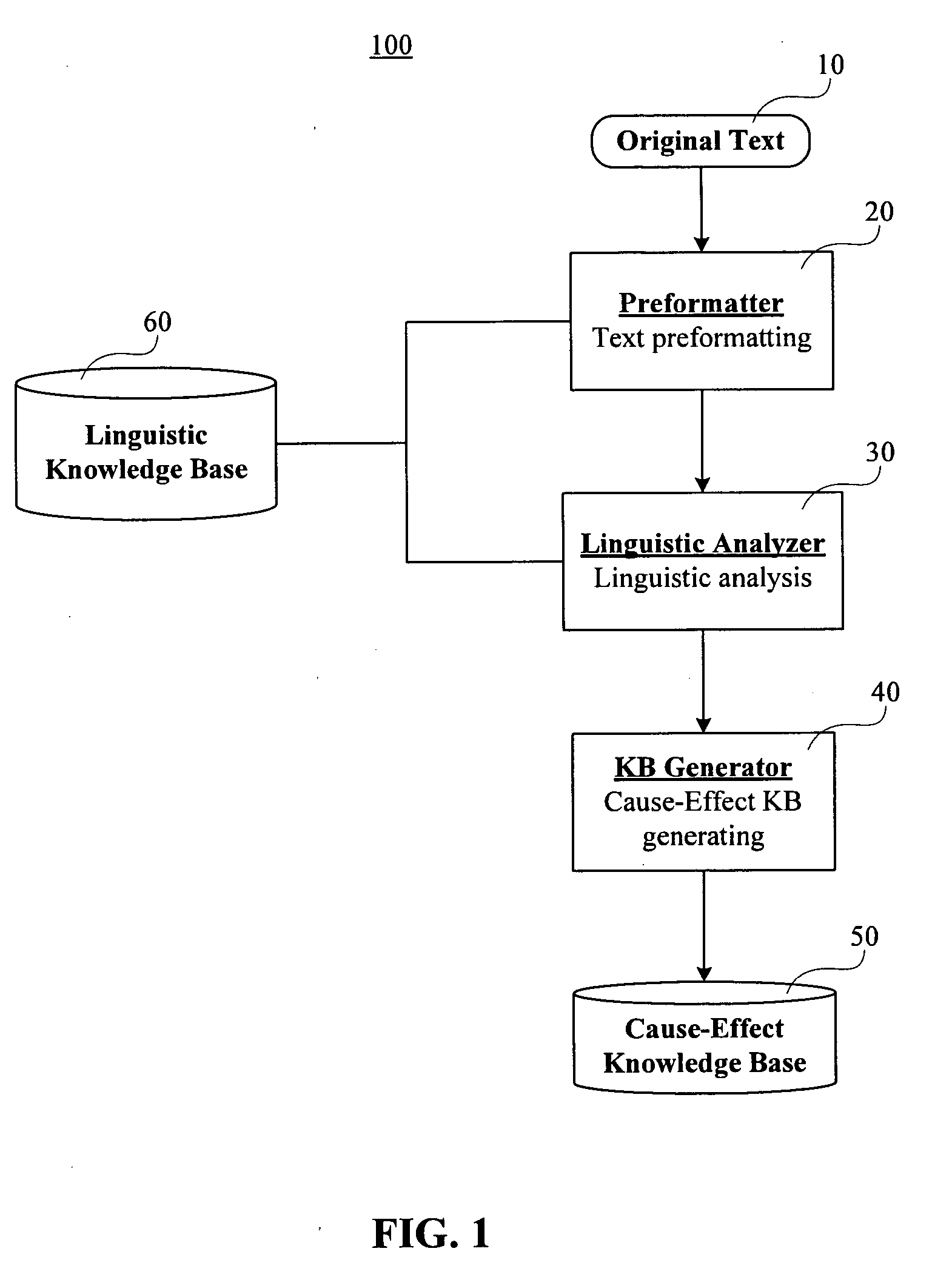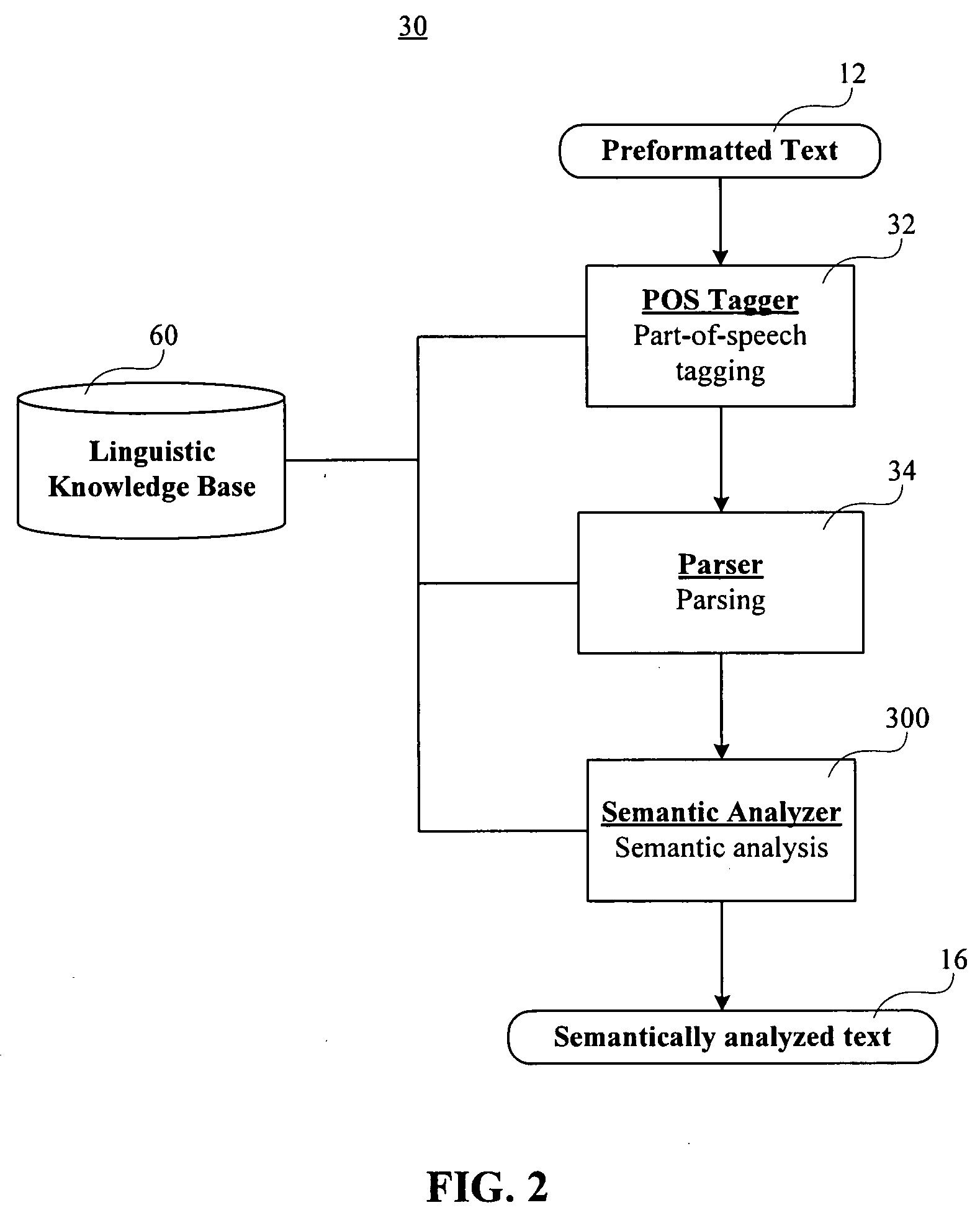Semantic processor for recognition of cause-effect relations in natural language documents
a natural language document and semantic processor technology, applied in semantic analysis, instruments, computing, etc., can solve the problem that the approach cannot be utilized to create adequate real-life (industrial) applications
- Summary
- Abstract
- Description
- Claims
- Application Information
AI Technical Summary
Problems solved by technology
Method used
Image
Examples
Embodiment Construction
[0027] Embodiments of the present invention relate to a system and method for automatic recognition of the three classical types of knowledge of the outside world: objects (concepts); facts; and cause-effect relations between the facts formulated in the form of rules that reflect regularities of the outside world (subject domain). Automatic detection of objects and facts, that is, semantic relations between objects in the Subject—Action—Object format (SAO), is described in U.S. Pat. No. 6,167,370, titled “Document Semantic Analysis / Selection with Knowledge Creativity Capability.”
[0028] In prior art systems, SAOs included only three components or element types: Subject (S), Action (A) and Object (O). In this prior art, at least one of these components must be defined in the SAO. However, in accordance with embodiments of the present invention, expanded SAOs (eSAOs) are used. In a preferred embodiment, eSAOs include seven components, where, again, at least one component is defined. Th...
PUM
 Login to View More
Login to View More Abstract
Description
Claims
Application Information
 Login to View More
Login to View More - R&D
- Intellectual Property
- Life Sciences
- Materials
- Tech Scout
- Unparalleled Data Quality
- Higher Quality Content
- 60% Fewer Hallucinations
Browse by: Latest US Patents, China's latest patents, Technical Efficacy Thesaurus, Application Domain, Technology Topic, Popular Technical Reports.
© 2025 PatSnap. All rights reserved.Legal|Privacy policy|Modern Slavery Act Transparency Statement|Sitemap|About US| Contact US: help@patsnap.com



